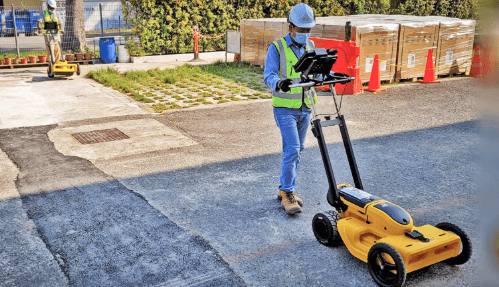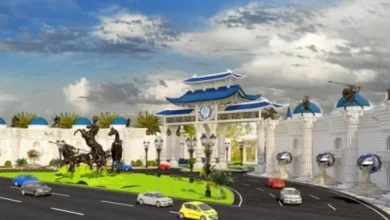GPR Utility Surveys in London & Surrey: Precision Mapping for Construction and Development

In the fast-paced world of construction and infrastructure development, knowing what lies beneath the ground is just as critical as what will eventually be built above it. In densely populated regions like London and Surrey, where subterranean infrastructure is complex, old, and often undocumented, excavating without proper planning can lead to disaster. That’s where GPR Utility Surveyors london Surrey come in—offering a non-invasive, highly accurate method to map underground utilities before any digging begins.
Whether you’re a developer, contractor, engineer, or architect, Ground Penetrating Radar (GPR) utility surveys provide the precision and reliability needed for safe, compliant, and efficient construction. In this article, we’ll explore how GPR utility surveys work, why they’re essential for projects in London and Surrey, and the numerous benefits they offer for construction and land development.
What is a GPR Utility Survey?
Ground Penetrating Radar (GPR) is a geophysical method that uses radar pulses to scan the subsurface and detect buried objects. The equipment transmits electromagnetic signals into the ground, which then bounce back when they encounter different materials such as pipes, ducts, or voids. These reflections are recorded and interpreted to generate a visual map of what’s underground.
GPR can detect a wide range of utilities and features, including:
- Water and gas pipes (metallic and non-metallic)
- Electrical and telecommunication cables
- Sewage and drainage systems
- Foundations, tanks, and voids
- Unmarked utility routes and historical infrastructure
Unlike older utility detection tools that only work on metallic utilities, GPR can locate plastic, concrete, and fiber-optic utilities, making it the most versatile and comprehensive option for underground mapping.
Why GPR Surveys Are Crucial in London & Surrey
1. Dense and Complex Utility Networks
London is a city layered with centuries of development, resulting in a vast and often undocumented maze of underground services. Surrey, with its mix of urban and semi-rural developments, is experiencing rapid infrastructure growth. This combination of aging legacy systems and new utility installations creates a high potential for unexpected obstructions during construction.
GPR surveys offer a way to see through the unknown, mapping everything from newly installed gas mains to forgotten Victorian-era sewers.
2. Regulatory Compliance and Safety
Accidental utility strikes are a serious concern in any excavation project. Damaging a gas line or high-voltage cable can result in severe injury, fatalities, costly repairs, and project shutdowns. In many cases, utility companies and local authorities require developers to provide PAS 128-compliant utility surveys before issuing excavation permits.
GPR surveys, especially those performed to PAS 128 standards, help ensure compliance with health and safety regulations and demonstrate due diligence during the planning phase.
3. Non-Invasive and Environmentally Friendly
GPR surveys are completely non-destructive, making them ideal for use in historic areas or conservation zones across London and Surrey. There’s no need to disturb the surface, dig trial holes, or damage roadways or landscapes.
This is especially beneficial in sensitive areas such as:
- Central London boroughs like Westminster and Camden
- Historic villages and protected zones in Surrey
- Residential neighbourhoods with minimal disruption requirements
Key Benefits of GPR Utility Surveys for Construction and Development
✔ Precision Mapping for Informed Design
GPR utility surveys provide high-resolution maps showing the location, depth, and direction of all detected underground features. This data allows architects and engineers to design around existing infrastructure, avoiding costly and dangerous surprises during excavation.
For example, a planned foundation in Kingston might need to be adjusted if GPR reveals shallow utility lines running through the site. Early awareness allows for smarter design decisions and smoother project execution.
✔ Improved Site Safety
Safety is paramount on any construction site. By accurately locating underground utilities, GPR surveys significantly reduce the risk of damaging critical services. This protects not only workers but also the surrounding public and nearby properties.
In crowded areas of London or expanding suburban zones in Surrey, a single utility strike can shut down entire blocks, disrupt transport, or cut off essential services. GPR surveys help mitigate these risks proactively.
✔ Time and Cost Efficiency
Discovering a buried pipe or cable after work has started leads to delays, redesigns, and often emergency repairs—all of which come with a high cost. GPR utility surveys help avoid unexpected issues that can derail project timelines and inflate budgets.
By investing in a GPR survey early, developers and contractors save time, reduce contingencies, and enhance the overall efficiency of their operations.
✔ Enhanced Communication and Reporting
Professional GPR surveyors provide clear, standardized deliverables that integrate with CAD, BIM, or GIS platforms. These digital files and reports can be easily shared across teams—ensuring that project managers, engineers, and planners are all working with accurate, up-to-date information.
This level of transparency supports better collaboration and reduces miscommunication during complex development phases.
✔ Adaptable to Different Environments
Whether your project is in a tight urban environment like Shoreditch or a rural estate in Surrey Hills, GPR technology is adaptable to a wide range of ground conditions and site constraints. From tarmac to soil, gravel, or concrete, GPR surveys can be conducted in nearly any terrain with minimal disruption.
Choosing the Right GPR Survey Provider in London & Surrey
To ensure you get the full benefits of a GPR utility survey, it’s essential to hire experienced, qualified professionals. Look for surveyors who:
- Are compliant with PAS 128 standards
- Use the latest dual-frequency GPR equipment
- Provide comprehensive digital reports with accurate mapping
- Have local knowledge of London and Surrey’s utility infrastructure
- Are capable of working on live sites, highways, and sensitive environments
Local expertise can make a significant difference in navigating borough-specific regulations or understanding legacy infrastructure that may not appear on standard utility records.
When Should You Conduct a GPR Utility Survey?
GPR utility surveys should be scheduled prior to any excavation, drilling, or construction activity, including:
- Building extensions or basement works
- Road widening or resurfacing
- Utility installation or relocation
- Infrastructure development and land subdivision
- Demolition and redevelopment planning
Conducting a survey during the early planning stages ensures a smooth and safe construction process from start to finish.
Conclusion
In today’s construction landscape—especially in infrastructure-heavy areas like GPR Utility Surveyors london Surrey underground utility data is not just helpful, it’s essential. GPR utility surveys provide the precision, safety, and foresight needed to execute projects efficiently and without disruption.
From improving worker safety to avoiding delays, minimizing costs, and ensuring legal compliance, GPR utility surveys are a cornerstone of modern development planning. By partnering with experienced surveyors, developers and contractors gain the confidence to build on solid ground—literally and figuratively.





